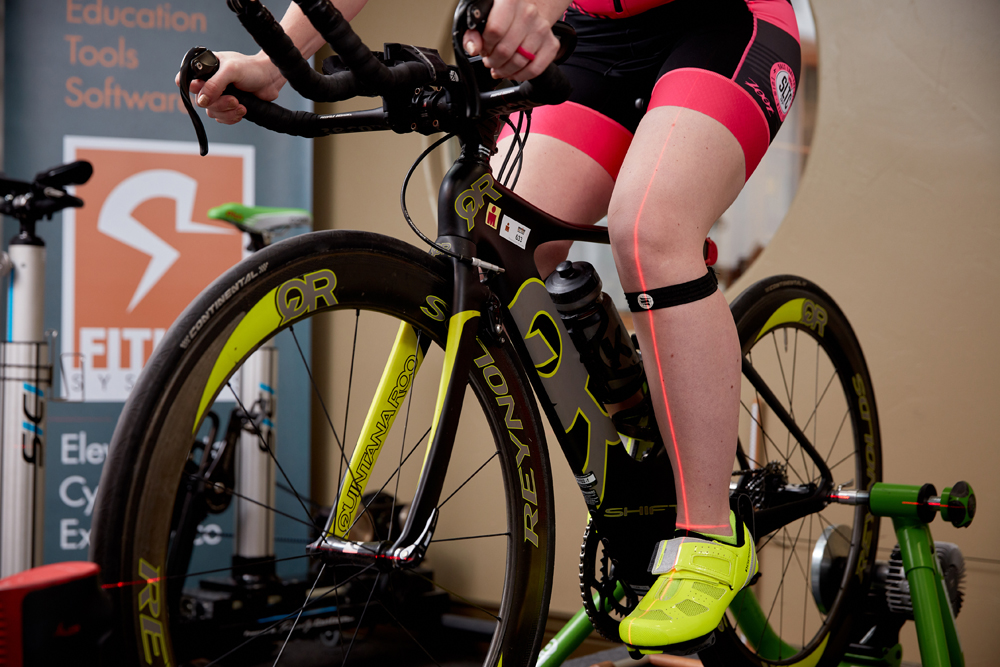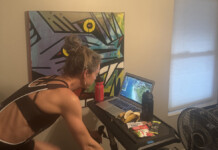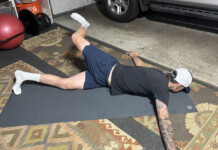Your knees are a critical component of the whole cycling experience, and unhappy knees make for unhappy cyclists. Although cycling is a low impact sport and often recommended for athletes with knee issues from running, there are still risks to the knees with cycling. The knees are trapped in the middle between the pedals and the saddle, and thus assume “victim status” for problems that originate elsewhere. When your knees complain, they are often pointing the finger of blame at some other aspect of your cycling set up.

There are exceptions though. If you have arthritis, torn meniscus, damaged ligaments or other physical problems in the knee joint, then the blame stops there. But if your knees are fundamentally sound and you suffer from periodic or persistent knee pain when riding or as a result of riding, then something is going on to cause the aggravation. What could it be?
- Change in work-load (play-load!) – Knees can protest when you suddenly increase your mileage, elevation gain or intensity. The common term is “spring knee” as it is more likely to occur when ramping up outdoor riding duration and intensity in spring. Muscles, tendons and ligaments need time to adapt to increased load. Ramp up slowly. Common symptoms can be pain on the outside of the knee (IT band inflammation), or at the front below the knee cap (patellar tendon inflammation).
- Reduced circulation – there is not a lot of insulation around the knee and the chill air of fall, winter and spring reduces circulation and makes for creaky hinges. Cover up the knees, using knee warmers, leg warmers or cycling tights. If the ambient air temperature is below 550 F, cover up.
- Saddle height too low – You increase compressive forces in the knee. Pedal too hard or far like this and you will get pain in the knee behind the knee cap, or in the front of the knee.
- Saddle height too high – You may feel a strain behind the knee, or might not feel anything in the knee but experience hamstring tenderness.
- Saddle setback – a saddle too far forward can have a similar effect to a saddle which is too low, meaning pain in the knee joint at the front of the knee, behind or below the knee cap.
- Cleat rotation – Although you are probably using cleats with float, the cleats need to be set so that the float range is centered for your leg action. As you pedal your tibia (lower leg bone) rotates slightly in and out, applying a twisting action. If that is unnecessarily constrained at the foot by the pedal, then it seeks an outlet in the knee. Add thousands of repetitive pedal strokes and you can see why your knees might get unhappy about this arrangement. A misaligned cleat is most likely to cause pain on the sides of the knees, either inside or outside.
- Stance width – is how far apart your feet are when on the pedals. This is influenced by the bike design, crankset design, pedal axle length and lateral cleat placement. If you are pinned too close together or forced to far apart for your body’s preferred biomechanics, this will put strain on the medial and lateral ligaments in the knee, meaning pain on the inside or outside of the knees. The wider the tires the wider the chainstays, bottom bracket, cranks and therefore pedals. Road bikes have the narrowest pedaling platform, fat bikes have the widest. It is easier to widen a pedaling stance than it is to reduce it. There is a very limited range of lateral movement available in the cleat positioning, but some pedal brands offer different length pedal spindles, and pedal spacers are available to boost width.
If you are jumping onto a fat bike this winter after a season on your road or mountain bike, your knees and quad muscles may protest for a few weeks due to the different stance position and pedaling forces. There is not a lot that can be done to narrow the stance width, but some refinements may be available to help with this.
With knees, there is no gain with pain. Pain is a warning sign that something is amiss. Unlike a muscle strain or a bruise, aches or pains in the knee are usually associated with ligaments and tendons, and these can take an unreasonable amount of time to settle down and come good again – if at all. Take care of your knees. They have joint command of your cycling pleasure and performance.
John Higgins wants to elevate your cycling experience. He operates BikeFitr – an independent bike fitting studio, and Fit Kit Systems – supplying equipment and education to bike retailers and fitters. Contact: john@bikefitr.com









I liked all your articles. Lately, I have had some issues with fluid behind my right knee. It used to flare up when I ran years ago but then I switched over to road biking and pretty much it was no longer an issue. I have no idea what changed. Max Testa did my last bike fit when I purchased a Bianchi Infinito. I still ride this bike.
Do not know if I need another bike fit? Perhaps a new bike seat? Shoes? Seat lowered a tad after I decided to raise it a tad? What a guessing game it is.
Hi Pauline, if you are sure your bike seat has not slipped down since your fit with Max, I would advise seeing a Sports Med doctor (like Max!) for an evaluation regarding the fluid build up. An ultrasound may be requested to see if there are any underlying issues. This is fairly rare and a medical evaluation would be higher priority than another bike fit session as a starting point.
Baker’s cysts can be caused by poor bike fit and overuse. See your doctor and the Mayo Clinic’s website: https://www.mayoclinic.org/diseases-conditions/bakers-cyst/symptoms-causes/syc-20369950
Comments are closed.